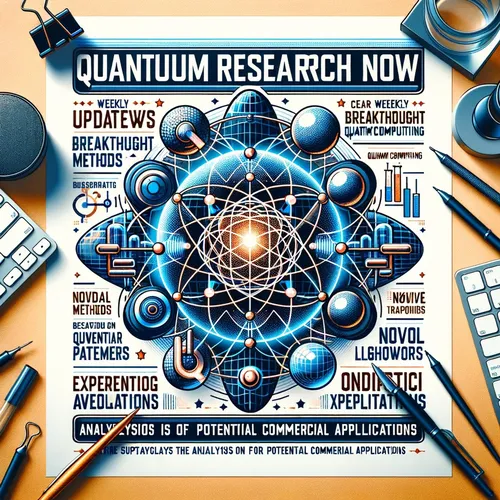Fujitsu's 10,000-Qubit Leap: Quantum Computing's Superconducting Odyssey
- Author
- Quiet. Please
- Published
- Mon 04 Aug 2025
- Episode Link
- https://www.spreaker.com/episode/fujitsu-s-10-000-qubit-leap-quantum-computing-s-superconducting-odyssey--67245988
This is your Quantum Research Now podcast.
This is Leo, your Learning Enhanced Operator, and I have to dive straight in—because the quantum world has little patience for hesitation. Today, the very fabric of computational possibility shifted, not with a whisper but with Fujitsu’s thundering announcement: they have begun building a superconducting quantum computer boasting over 10,000 physical qubits, aiming for completion by 2030. If that number feels abstract, picture this: imagine going from an abacus to a modern supercomputer in a single leap—that’s the scale of ambition we’re discussing.
Fujitsu’s endeavor isn’t just another headline; it’s an engineering odyssey fueled by Japan’s National Institute of Advanced Industrial Science and Technology, RIKEN, and the country’s New Energy and Industrial Technology Development Organization. Their “STAR architecture”—an early-stage fault-tolerant design—will aim for 250 logical qubits by 2030 and a staggering 1,000 logical qubits by 2035. Now, to translate: logical qubits are like reliable messengers in a noisy battlefield. Most of today’s quantum machines fight against errors—tiny disturbances, like whispers thrown into a howling storm. But with robust error correction, logical qubits keep the quantum story accurate and actionable, which is essential for running practical algorithms on real-world problems.
Let me bring this home, literally. Today’s news is less like unveiling a faster car and more like discovering flight. With 10,000 physical qubits orchestrated toward fault-tolerant operation, we stand on the threshold of simulating complex molecules for drug discovery, optimizing sprawling global supply chains, and potentially transforming entire industries. It’s akin to being given the master key to the city of mathematics itself—a key classical computers could only dream of duplicating.
Inside a quantum lab, the hum is almost cathedral-like. Superconducting circuits chilled to near absolute zero, awash in microwaves, compose a dance so delicate that a single stray vibration could muddle the story being told by the qubits. But in these cold, silent chambers, ideas ignite: What if we could weave diamond-spin qubits into superconducting tapestries, as Fujitsu plans beyond 2030? The results could be hardware so robust, so versatile, it reshapes our digital world.
If you need a day-to-day analogy, consider quantum error correction like autocorrect on your phone, but working at trillions of operations per second, fixing mistakes before you even know they’ve appeared. With the STAR architecture’s focus on error correction and integration—melding superconducting might with diamond precision—it’s not just an incremental improvement, but a quantum leap.
Fujitsu’s news tells us the age of quantum industrialization is no longer a distant promise—it’s engineering underway, and the race is global. Every new system, every milestone, is another quantum parallel: small chances can yield outsized outcomes, just as a single breakthrough can cascade across technology, society, and the future itself.
Thank you for tuning into Quantum Research Now. If you have questions or topics you want explored, send them to [email protected]. Subscribe so you never miss a quantum leap. This has been a Quiet Please Production—discover more at quietplease.ai. Until next time, keep your superpositions balanced and your curiosity entangled.
For more http://www.quietplease.ai
Get the best deals https://amzn.to/3ODvOta
